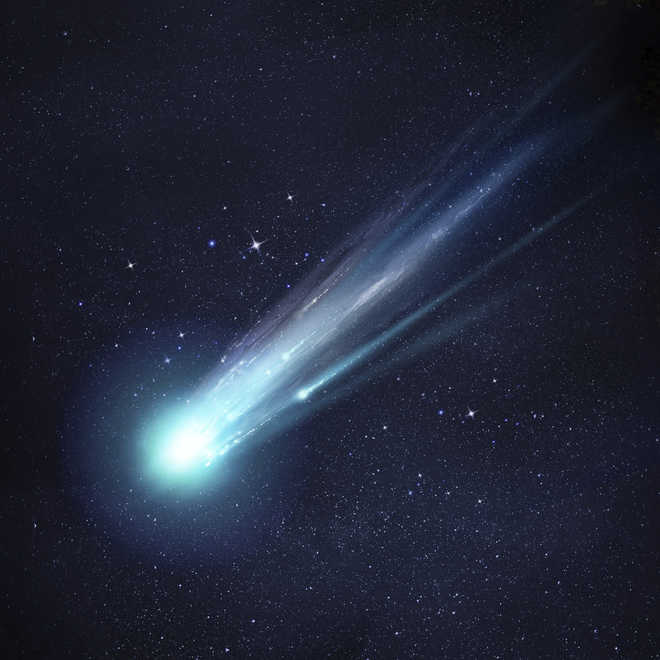Washington: Stargazers are in for a treat as the “brightest comet” is set to make one of the 10 closest comet flybys of Earth in 70 years, and one may even be able to see it without a telescope Sunday, NASA said.
Although the comet known as 46P/Wirtanen will approach at a distant 11.4 million kilometres or 30 lunar distances from Earth, it’s still a fairly rare opportunity.
Comet Wirtanen has already been visible in larger amateur telescopes, and while the brightness of comets is notoriously difficult to predict, there is the possibility that during its close approach comet Wirtanen could be visible with binoculars or to the naked eye, NASA said in a statement Friday.
“This will be the closest comet Wirtanen has come to Earth for centuries and the closest it will come to Earth for centuries,” said Paul Chodas, manager of the Center for Near-Earth Object Studies at NASA’s Jet Propulsion Laboratory in California.
“This could be one of the brightest comets in years, offering astronomers an important opportunity to study a comet up close with ground-based telescopes, both optical and radar,” he added.
First discovered by astronomer Carl Wirtanen in 1948, 46P/Wirtanen, with a width of 1.1 kilometres, orbits the Sun fairly quickly for a comet — once every 5.4 years — making it a short-period comet. (Long-period comets, on the other hand, have orbital periods greater than 200 years.)
At the time of closest approach, the comet will appear to be located in the constellation Taurus close to the Pleiades.
In a bid to take advantage of the close approach, astronomers led by the University of Maryland are planning an observation campaign.
The campaign would aid in detailed scientific study of the properties of this “hyperactive” comet which emits more water than expected, given its relatively small nucleus.
The comet will even pass through the observing field of the Transiting Exoplanet Survey Satellite (TESS), NASA said.
IANS
